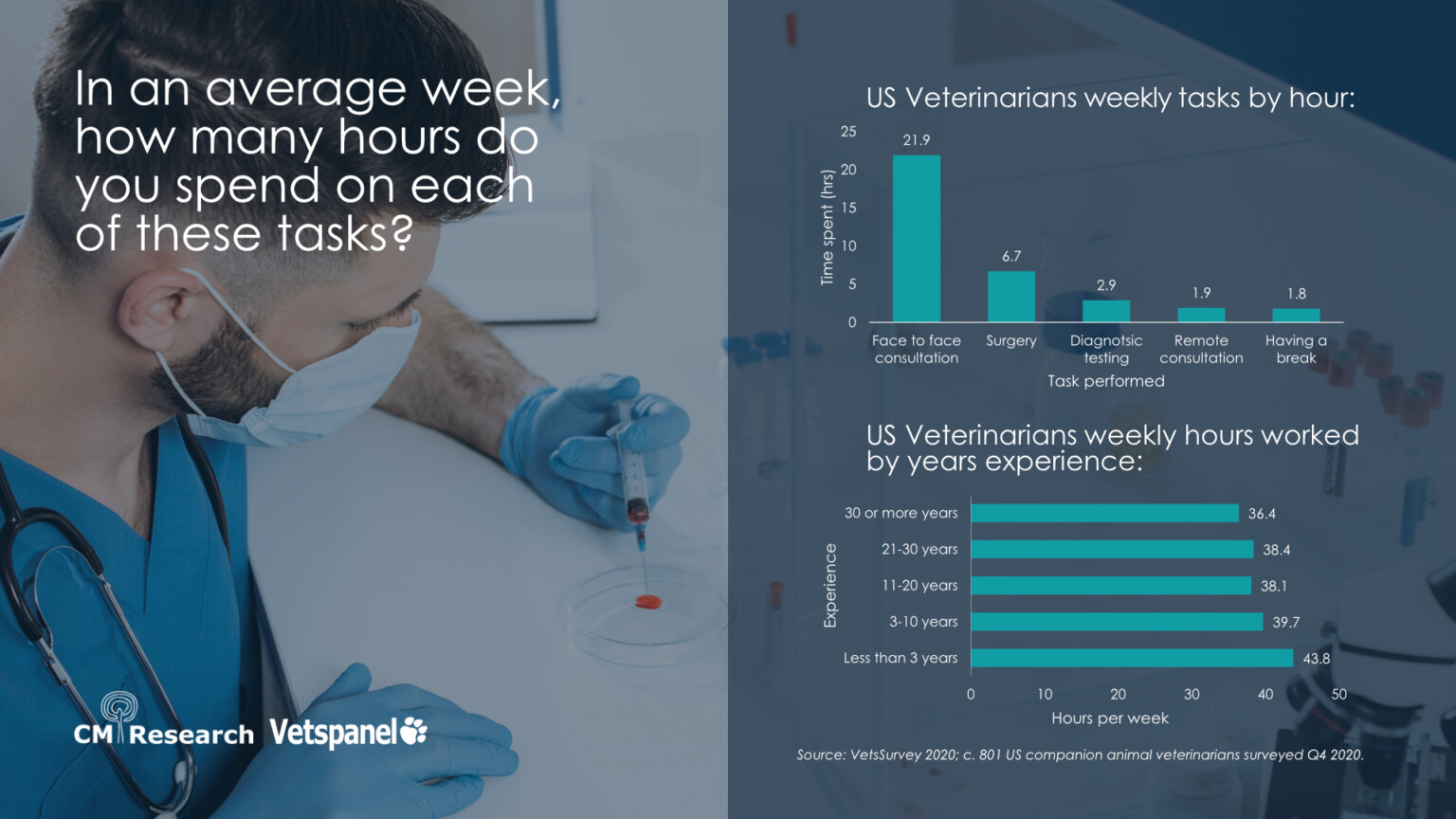Less experienced vets working longest hours in veterinary industry

The latest data from over 800 companion animal veterinarians in the US has found that among employed vets, those with less experience tend to work on average around four hours per week more than those who have worked around 10 times as many years as a trained veterinarian.
Over the course of a year that accounts to working 208 hours, or just over eight and a half days more than vets who have been in the industry for over 30 years.
The figures show that vets with less than three years’ experience work more hours than other vets, as the veterinary industry tries to recover from the backlog caused by the coronavirus pandemic.
Veterinary professionals weekly hours worked split by experience level. Weekly time split by task.

According to data from Statista, this means that young veterinarians are working the second most hours per week in the United States, only less than those in the mining and logging industry.
On average, miners and loggers work 45.2 hours per week, just 1.4 hours more than less experienced veterinarians.
This means young vets are working more hours than those in the construction and transport industries and nearly 10 hours more than the average hours worked by those in the education and health sectors.
Further data from Statista shows that even the most experienced vets are working more hours than the average American who works around 34.7 hours per week.
However, the trend changes in senior owners and partners with experience ranging from 21-30 years of experience who work as much as 46.6 hours per week in comparison to those with over 30 years of experience who average 33.2 hours per week.
On average, full time veterinarians in the US are expected to work around 40 hours per week as opposed to part-time vets who work around 25 hours per week.
The data found that vets spend most of their time in face to face consultations with nearly 22 hours per week spent consulting with pet owners.
This is a stark contrast to the 2.9 hours they average per week carrying out diagnostic testing, which younger vets do more of, and the 6.7 hours they spend in surgery.
Figures also claim that owners and partners spend almost double the amount of time on admin than employed vets do.
Alarmingly, the data claims that veterinarians average only 1.8 hours of break per week, or in a five day week around 21.6 minutes per shift.
These new findings come as our COVID-19 Veterinary Tracker identified that in April last year 83% of veterinary clinics in the US had to limit the number of clients and pets allowed in the practice per day.
Earlier this year we learned that stress levels in veterinarians in the US has increased by as much as 31% since the coronavirus pandemic.
Whether there is a correlation between hours worked and the rising levels of stress among veterinarians during the pandemic remains to be seen, however with the backlog caused by cancelled appointments during lockdowns, it is certain that veterinarians will not be reducing their hours anytime soon.